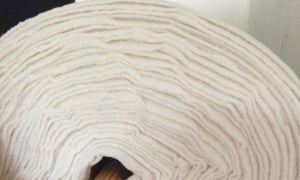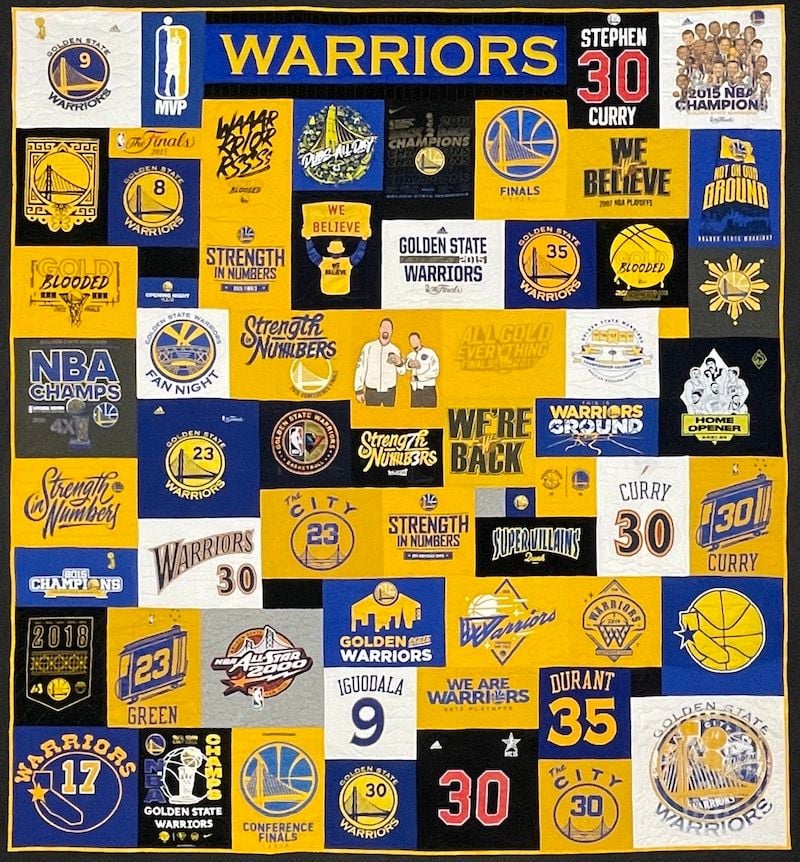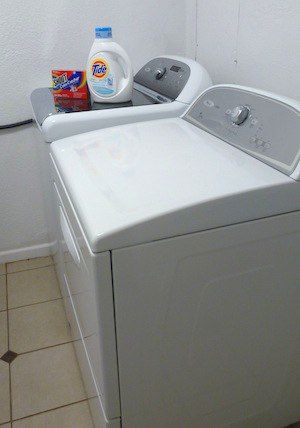Batting
 Batting is the “stuffing” in the middle of a quilt. Read more about batting here.
Batting is the “stuffing” in the middle of a quilt. Read more about batting here.
The type of batting used varies between quilter makers. Some quilter’s use 100% polyester batting – this does not shrink. And it’s not a great type of batting.
Here, at Too Cool T-shirt Quilts, we use an 80% cotton/20% poly needled punched batting. We don't prewash the batting because there is almost no shrinkage.
Exception - Some battings will shrink. These types of batting are not appropriate for a T-shirt quilt. Experienced quilt makers know this. But not all quilt makers have enough experience to know this. It’s important to ask your quilt maker if they use a batting that will shrink. If they say, “I don’t know,” run the other direction. Read more about hiring a quilt maker here.
Typically, the batting used in a T-shirt quilt wouldn't require you to dry-clean your quilt.
Backing Materials
 This is where things get tricky. You have to ask your quilter what type of fabric they uses and how it's treated.
This is where things get tricky. You have to ask your quilter what type of fabric they uses and how it's treated.
Backing material should be a high quality 100% cotton material. It should always be prewashed to remove excess dyes, to set the dye, and to shrink the fabric. When done correctly, there is no reason that the backing material would require you to dry-clean your quilt.
Exception – If the backing material weren’t prewashed. In this case, you would want to dry-clean your quilt.
What happens if you wash a quilt made with fabric that wasn't prewashed? You could have two major issues:
-
The Backing Material Could Shrink
The first time a fabric goes through the wash it will shrink. If the first time a piece of fabric is washed is after it has been made into a quilt, it will still shrink. The cheaper the fabric, the more shrinkage you could expect.
Here’s what happens. Your backing material will shrink while the batting and quilt top won’t. The result would be batting that bunches up. It bunches up because now the batting is larger than backing material. This will make for a lumpy quilt. This would make me unhappy if this happened to my quilt. -
The Backing Material Color Might Bleed
Think of the red sock in a load of whites. If you have a red backing, your white T-shirts will look pink. Initially this might seem worse than the backing material shrinking. But, there's a solution to bleeding fabric. If you know that the fabric might bleed a head of time, you can save your quilt. Read about it here.
So, Why Would a T-shirt Quilt Need to Be Bry-cleaned?
- If there is an item you choose to put in your quilt that is not machine-washable.
- If the backing material isn't prewashed. This is very common, especially with low price T-shirt quilt makers.
Have you received your T-shirt quilt back from your quilter with a dry-clean label? Is there anything in the quilt top that had to be dry-cleaned? If not, you have a problem. This could have been avoided if the backing material had been prewashed. Your quilter wanted to save some time. Good for them, bad for your quilt.
And we are sorry. As we did for our customer at the beginning of this article, we can remake a quilt that is dry-clean only into a regular wash and dry T-shirt quilt. Read more about that here.
Want to learn more about T-shirt quilts? Visit our Learning Center.
We have over 200 articles about all aspects of T-shirt quilts.



 This question came to us when we were remaking a Campus Quilt T-shirt quilt. When we received the quilt, the first thing we did was take a close look. We saw a “Dry-clean for best results” tag. "What?!" Why would you need to dry-clean a T-shirt quilt?
This question came to us when we were remaking a Campus Quilt T-shirt quilt. When we received the quilt, the first thing we did was take a close look. We saw a “Dry-clean for best results” tag. "What?!" Why would you need to dry-clean a T-shirt quilt? When you wash your clothes in a washing machine, detergents break up the dirt. The dirt clings to the detergent. The rinse cycle drains the soapy water removing the detergents and dirt.
When you wash your clothes in a washing machine, detergents break up the dirt. The dirt clings to the detergent. The rinse cycle drains the soapy water removing the detergents and dirt. The T-shirt is the ultimate wash and wear article of clothing. There aren’t very many T-shirts out there that are dry-clean only. Actually, I have never seen one!
The T-shirt is the ultimate wash and wear article of clothing. There aren’t very many T-shirts out there that are dry-clean only. Actually, I have never seen one!
